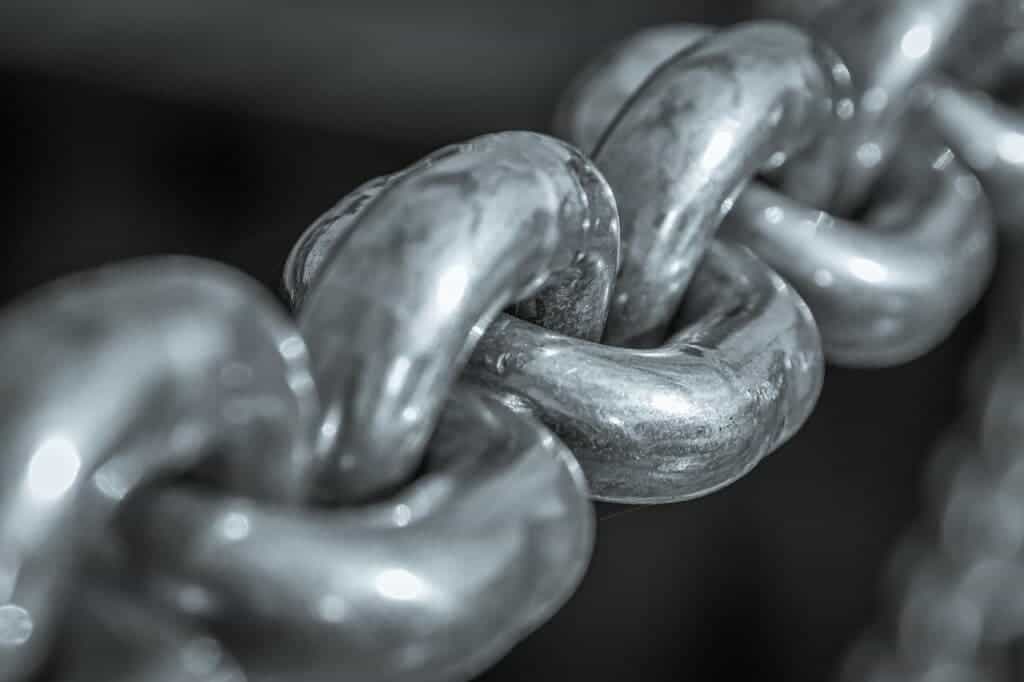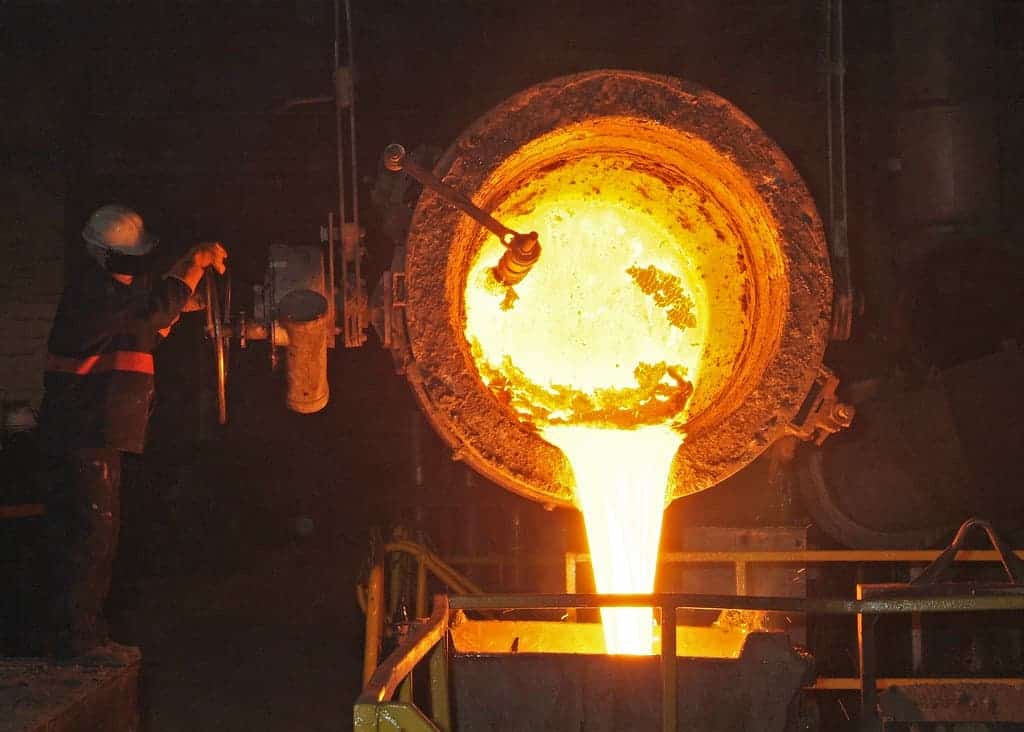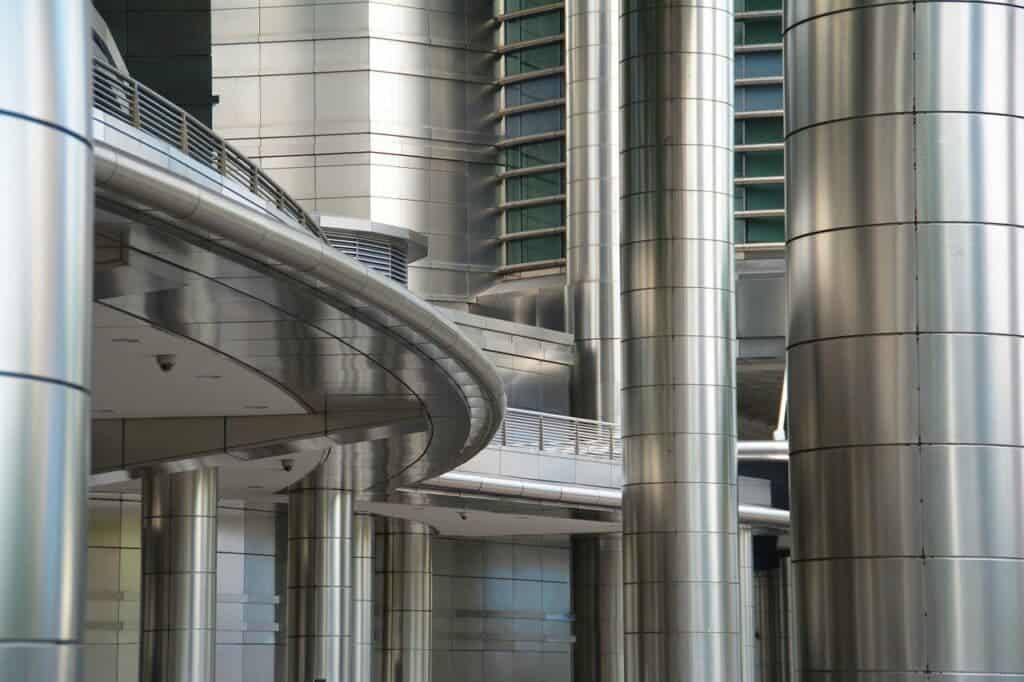Today, iron is the most widely-used metal. It’s durable, versatile, and abundant in the Earth’s crust (making it cheap). However, in its pure form, iron is very susceptible to oxygen — it rusts rapidly. Stainless steel provides a solution to this problem.

The world as we know it wouldn’t be possible without stainless steel. It’s a material that combines strength, flexibility, and durability at an affordable cost. This alloy makes an appearance in everything, from high-rises and high-performance cars to spoons and baby monitors. To quite a large extent, our world is built on stainless steel. So let’s learn more about it.
What is stainless steel?
‘Stainless steel’ is a generic, umbrella term, that denotes a wide range of metal alloys — cocktails of metals — based on iron. Like all other types of steel, it also contains carbon.
It has excellent resistance to corrosion (oxidation or rusting), is relatively non-reactive with most chemicals, has high durability, and good hygienic properties. It sees wide use today in products ranging from cutlery to medical devices to construction materials.
Aesthetically, stainless steel is a lustrous, silvery metal, that can take a very high polish. From a practical point of view, stainless steel is a strong and highly resilient material; its exact properties depend on the composition of the alloy, but it can be tailored to suit a wide range of needs, having the potential to be highly flexible, resistant to scratching, mechanically tough, or any other property needed in a certain application. It can be recycled practically forever, as its recovery rate during recycling is close to 100%
Although it is more difficult and expensive to produce than iron metal, stainless steel has practically replaced iron in all except the most specialized cases due to the advantages it holds over the un-alloyed metal. Almost all ‘iron’ products you’ve encountered in your life were made from stainless steel.
What is stainless steel made of?

Stainless steel differs from other types of steel through the addition of a handful of elements to the mix. The exact elements added vary with alloy type but, as a rule of thumb, stainless steels contain chromium (Cr), in quantities ranging from 10.5 to 30% by weight.
Chromium is what gives these alloys their high resistance to corrosion. As it interacts with corrosive agents in the air, chromium forms a passive layer — a ‘film’ of chromium oxide — on the metal’s surface which protects the alloy. Oxygen and moisture cannot penetrate this film, so it protects the iron throughout the body of the steel from rusting.
Other elements that are added to stainless steel include non-metals such as sulphur, silicon, or nitrogen, metals such as nickel, aluminium, copper, or more exotic metals such as selenium, niobium, and molybdenum. Although the exact composition of the alloy is decided based on its desired properties — each element added in, and their proportion, changes the characteristics of the alloy — some of the most commonly-seen extra elements in stainless steel alloys are nickel and nitrogen. These improve its hardiness and ability to resist corrosion in certain conditions, but also increase its price per pound.
There are currently over 100 types (known as ‘grades’) of stainless steel being produced and used, each with its own ISO number, many of them for specialized applications. The most common five types are known as ‘austenitic’, ‘ferritic’, ‘martensitic’, ‘duplex’, and ‘precipitation hardening’ steels.
- Austenitic stainless steels are the most widely used grade. They have very good resistance to corrosion and heat, offering good mechanical properties over a wide range of temperatures. It’s used in household goods, industrial applications, in construction, and in decorations.
- Ferritic stainless steels have lower mechanical resitance — they resemble mild steels in strength — but are better able to resist corrosion, heat, and are harder to crack. Any washing machine or boiler you have at home are probably made of ferritic steel.
- Martensitic stainless steels are much harder and stronger than their peers, but they’re not as able to withstand corrosion. This is the type of steel that makes high-grade knives, and is also used for turbine blades.
- Duplex stainless steel is a mixture of austenitic and ferritic steels, and their properties are, similarly, a middle-ground between these two grades. As a rule of thumb, it is used in applications where both strength and flexibility are required, and corrosion resistance is a plus; shipbuilding is a prime example.
- Precipitation hardening stainless steels are a subclass of alloys, somewhere in the overlap between martensitic and austenitic steels. They offer the best mechanical properties of the lot (they have very high material strength), due to the addition of elements such as aluminium, copper, and niobium.
What is stainless steel used for?

With a material as versatile as stainless steel, it’s hard to cover all its uses in any detail. Suffice to say, it’s used in virtually all goods and applications where strength, flexibility, good looks, and hygiene are required, for relatively low cost, and weight is not a huge concern.
Household goods and appliances make heavy use of stainless steel, especially kitchenware or other products meant to come into contact with water. Knives and cutlery, home appliances such as washing machines, bathroom fixtures, piping, cookware make use of stainless steel due to its resistance to corrosion, its good looks, ease of washing, and high durability. Various grades of stainless steel are used depending on the intended role and usage of each product.
Medical tools also make ample use of stainless steel. Things like surgical and dental instruments, scissors, trays, and a wide range of other medical-use objects are made from this alloy. Here, it is the chemical inertness and corrosion resistance of stainless steel that is most important. Medical devices also contain stainless steel, in particular structural elements and coverings, due to their strength and ease of cleaning. Medical implants, such as those used in knee or hip replacement surgery, are also made of stainless steel.
Stainless steel is also used in the construction of vehicles, mostly ships, trains, and cars. Aircraft manufacturers tend to prefer aluminium alloys, as they are more lightweight. That being said, stainless steel is essential in the production of aircraft frames and various structural elements of the landing gear. For all vehicles, however, stainless steel combines good mechanical properties with high longevity (due to its resistance to corrosion), making for durable and long-lived parts.
Construction and architecture are two further domains that love stainless steel. The combination of strength and high chemical inertness makes this alloy ideal for structural elements in buildings such as skyscrapers, or in exposed elements, such as fire escapes or service ladders.
Jewelry manufacturers also employ stainless steel in their products, where it’s preferred due to its hypoallergnic properties (it doesn’t trigger metal allergies).
Stainless steel, today, is an indispensible alloy. Our societies depend heavily on it, using it in everything from tiny knicknacks around the house to the mightiest skyscraper. Its unique combination of strength, longevity, and relatively low cost makes it so that, most likely, stainless steel won’t be replaced anytime soon.


